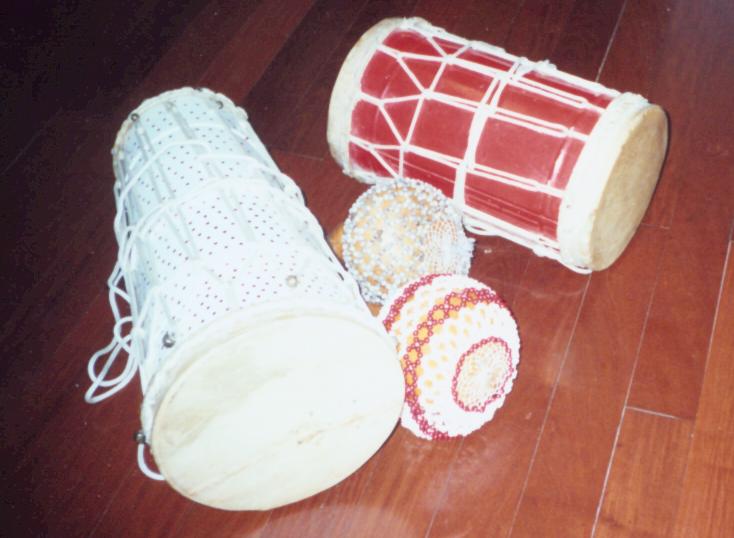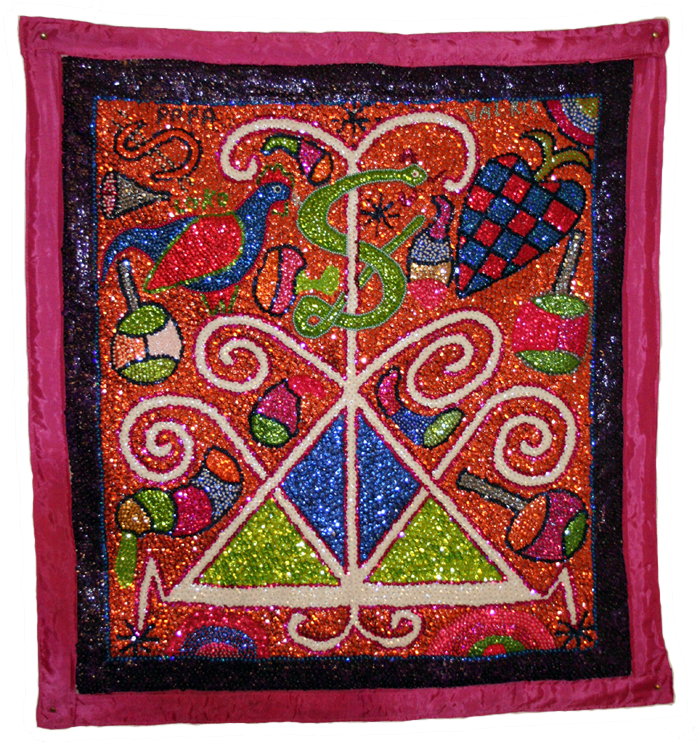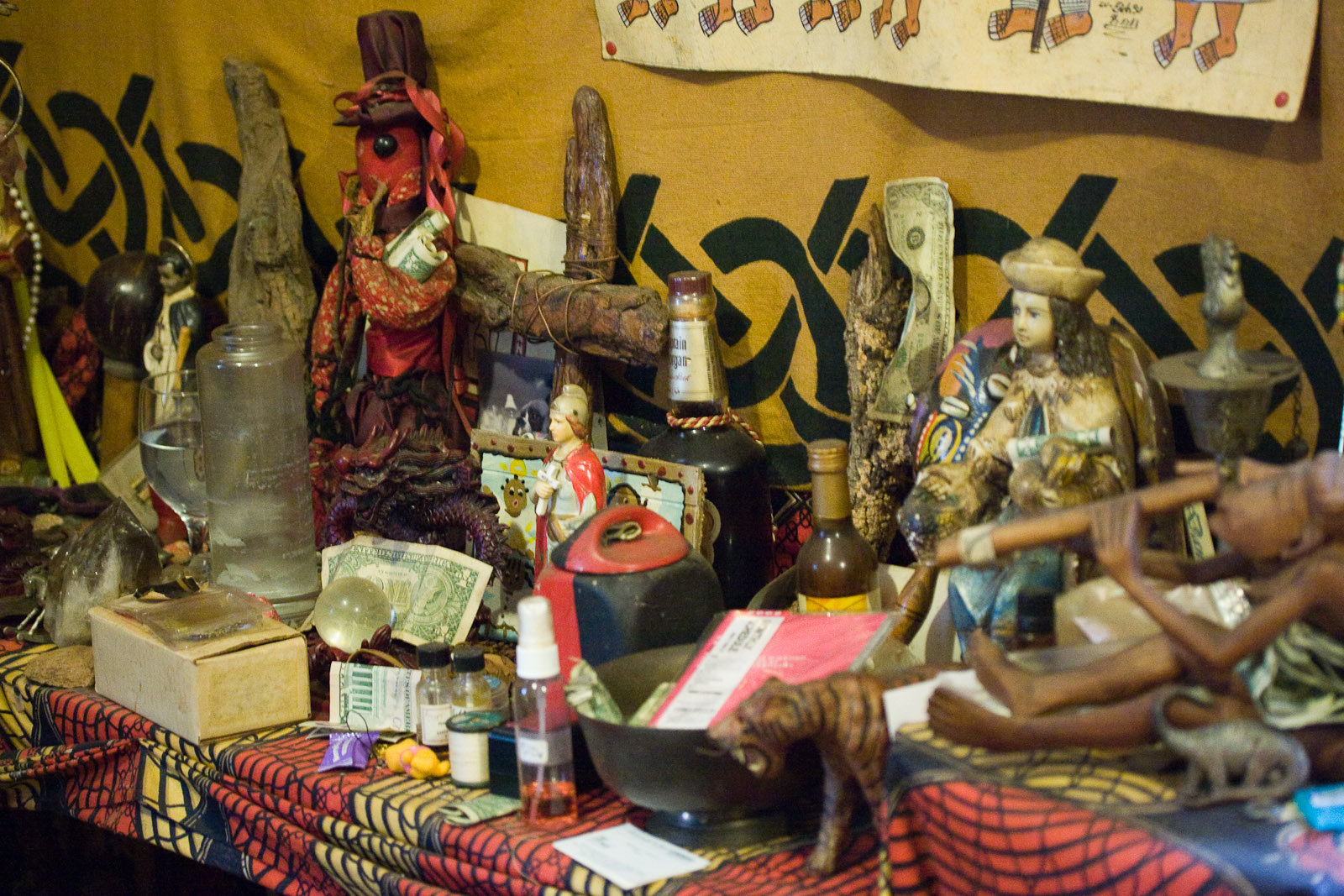|
Candomblé
Candomblé () is an African diasporic religion that developed in Brazil during the 19th century. It arose through a process of syncretism between several of the traditional religions of West Africa, especially that of the Yoruba, and the Roman Catholic form of Christianity. There is no central authority in control of Candomblé, which is organised through autonomous groups. Candomblé involves the veneration of spirits known as ''orixás''. Deriving their names and attributes from traditional West African deities, they are equated with Roman Catholic saints. Various myths are told about these orixás, which are regarded as subservient to a transcendent creator deity, Oludumaré. Each individual is believed to have a tutelary orixá who has been connected to them since before birth and who informs their personality. An initiatory tradition, Candomblé's members usually meet in temples known as ''terreiros'' run by priests called ''babalorixás'' and priestesses called ''ialorixá ... [...More Info...] [...Related Items...] OR: [Wikipedia] [Google] [Baidu] |
Candomblé Ketu
Candomblé Ketu (or Queto in Portuguese) is the largest and most influential branch (''nation'') of Candomblé, a religion practiced in Brazil, Argentina, and Uruguay. The word Candomblé means "ritual dancing or gather in honor of gods" and Ketu is the name of the Ketu region of Benin. Its liturgical language, known as ''yorubá'' or ''Nagô'', is a dialect of Yoruba. Candomblé Ketu developed in the early 19th century and gained great importance to Brazilian heritage in the 20th century. History ''Queto'' is a system of beliefs that merges the Yoruba mythology (brought to the New World by Yoruba slaves) with Christianity and Indigenous American traditions. Queto developed in the Portuguese Empire. Yoruba slaves carried with them various religious customs, including a trance and divination system for communicating with their ancestors and spirits, animal sacrifice, and sacred drumming and dance. Its origins are entwined with the religious and beneficent brotherhoods (''irman ... [...More Info...] [...Related Items...] OR: [Wikipedia] [Google] [Baidu] |
Umbanda
Umbanda () is a syncretic Afro-Brazilian religion that blends traditional African religions with Roman Catholicism, Spiritism, and Indigenous American beliefs. Although some of its beliefs and most of its practices existed in the late 19th century in almost all Brazil, it is assumed that Umbanda originated in Niterói and surrounding areas in the early 20th century, mainly due to the work of Zélio Fernandino de Moraes, a psychic (" medium") who practiced Umbanda among the poor Brazilian of African descent. Since then, Umbanda has spread across mainly southern Brazil and neighboring countries like Argentina and Uruguay. Umbanda has many branches, each one with a different set of beliefs and practices. Some common beliefs are the existence of a Supreme Being and creator of the universe known as Olodumare. Other common beliefs are the existence of deities called Orixás, most of them syncretized with Catholic saints that act as divine energy and forces of nature; spiri ... [...More Info...] [...Related Items...] OR: [Wikipedia] [Google] [Baidu] |
Afro-Brazilian
Afro-Brazilians ( pt, afro-brasileiros; ) are Brazilians who have predominantly African ancestry (see " preto"). Most members of another group of people, multiracial Brazilians or ''pardos'', may also have a range of degree of African ancestry. Depending on the circumstances (situation, locality, etc.), the ones whose African features are more evident are always or frequently seen by others as "africans" - consequently identifying themselves as such, while the ones for whom this evidence is lesser may not be seen as such as regularly. It is important to note that the term pardo, such as preto, is rarely used outside the census spectrum. Brazilian society has a range of words, including negro itself, to describe multiracial people. Preto and pardo are among five ethnic categories used by the Brazilian Institute of Geography and Statistics, along with '' branco'' ("white"), '' amarelo'' ("yellow", East Asian), and '' indígena'' (Native American). In 2010, 7.6% of the Brazilian pop ... [...More Info...] [...Related Items...] OR: [Wikipedia] [Google] [Baidu] |
Candomblé Bantu
Candomblé Bantu (also called Candomblé Batuque or Angola) is one of the major branches (''nations'') of the Candomblé religious belief system. It developed in the Portuguese Empire among Kongo and Mbundu slaves who spoke Kikongo and Kimbundu languages. The supreme and creative god is Nzambi or Nzambi a Mpungu. Below him are the Jinkisi or Minkisi, deities of Bantu mythology. These deities resemble Olorun and the other orishas of the Yoruba religion. Minkisi is a Kongo language term: it is the plural of Nkisi, meaning "receptacle". Akixi comes from the Kimbundu language term Mukixi. Etymology The word "Bantu" means "people"; it is a combination of ''ba'', a plural noun marker and ''-ntu'', meaning "person". "Banto" was a generic term used by the Portuguese in Brazil to describe people who spoke Bantu languages. Pantheon * Nzambi is the "sovereign master"; he created the earth, then withdrew from the world. Nzambi Mpungu remains responsible for rainfall and health. * Alu ... [...More Info...] [...Related Items...] OR: [Wikipedia] [Google] [Baidu] |
Macumba
''Makumba'' () is a term that has been used to describe various religions of the African diaspora found in Brazil, Argentina, Uruguay and Paraguay. It is sometimes considered by non-practitioners to be a form of witchcraft or black magic. The Atlantic slave trade of the 16th to 19th centuries brought millions of West and Central Africans to Brazil. There, traditional West and Central African religions continued to be practiced, often syncretising with each other and with both indigenous American and European influences. Among the Afro-Brazilian religious traditions that emerged were Candomblé, Umbanda, and Quimbanda. During the 19th century, the term ''Makumba'' was used generically in reference to all of these religions. By the late 20th century, the term ''Makumba'' was often reserved for those religious traditions whose focus was on dealing with "low" spirits, who were sometimes termed ''exus'' or ''devils''. These practices differed from Candomblé and Umbanda, which foc ... [...More Info...] [...Related Items...] OR: [Wikipedia] [Google] [Baidu] |
Candomblé Jejé
Candomblé Jejé, also known as Brazilian Vodum, is one of the major branches (''nations'') of Candomblé. It developed in the Portuguese Empire among Fon and Ewe slaves. Vodums Jejé spirits are called ''Voduns'' (sing. ''Vodum''). According to tradition, they were introduced into the Kingdom of Dahomey from nearby lands by its founder King Adja-Tado, on the advice of a ''bokono'' (seer). Their cult was reorganized and uniformized by King Agajah in the 18th century. Jejé Vodums are sometimes cultuated in houses of other nations by different names. For instance, the Vodum Dan or Bessen is called Oxumarê in Candomblé Ketu. Conversely, the Ketu Orixás may be cultuated in Jejé houses, but retain their names. Voduns are organized into families: Bibliography * See also *Candomblé *Tambor de Mina (mixture of Dahomean religion, Yoruba Religion, Indigenous American, and European traditions, in Maranhão, Brazil Brazil ( pt, Brasil; ), officially the Federative ... [...More Info...] [...Related Items...] OR: [Wikipedia] [Google] [Baidu] |
Haitian Vodou
Haitian Vodou is an African diasporic religion that developed in Haiti between the 16th and 19th centuries. It arose through a process of syncretism between several traditional religions of West and Central Africa and Roman Catholicism. There is no central authority in control of the religion and much diversity exists among practitioners, who are known as Vodouists, Vodouisants, or Serviteurs. Vodou revolves around spirits known as ''lwa.'' Typically deriving their names and attributes from traditional West and Central African divinities, they are equated with Roman Catholic saints. The lwa divide up into different groups, the ''nanchon'' ("nations"), most notably the Rada and the Petwo. Various myths and stories are told about these lwa, which are regarded as subservient to a transcendent creator deity, Bondye. This theology has been labelled both monotheistic and polytheistic. An initiatory tradition, Vodouists usually meet to venerate the lwa in an ''ounfò'' (temple), run ... [...More Info...] [...Related Items...] OR: [Wikipedia] [Google] [Baidu] |
Santería
Santería (), also known as Regla de Ocha, Regla Lucumí, or Lucumí, is an African diasporic religion that developed in Cuba during the late 19th century. It arose through a process of syncretism between the traditional Yoruba religion of West Africa, the Roman Catholic form of Christianity, and Spiritism. There is no central authority in control of Santería and much diversity exists among practitioners, who are known as ''creyentes'' ("believers"). Santería is polytheistic and revolves around deities called ''oricha''. Deriving their names and attributes from traditional Yoruba divinities, they are equated with Roman Catholic saints. Each human is believed to have a personal link to a particular oricha who influences their personality. Various myths are told about these oricha, who are regarded as subservient to Olodumare, a transcendent creator deity. Olodumare is believed to be the ultimate source of ''aché'', a supernatural force permeating the universe that can be ma ... [...More Info...] [...Related Items...] OR: [Wikipedia] [Google] [Baidu] |
African Diaspora Religions
African diaspora religions are a number of related Pagan beliefs that developed in the Americas in various nations of the Caribbean, Latin America and the Southern United States. They derive from Pagan traditional African religions with some influence from other religious traditions, notably Christianity and Islam. Characteristics Afro-American religions involve ancestor veneration and include a creator deity along with a pantheon of divine spirits such as the Orisha, Loa, Vodun, Nkisi and Alusi, among others. In addition to the religious syncretism of these various African traditions, many also incorporate elements of Folk Catholicism including folk saints and other forms of Folk religion, Native American religion, Spiritism, Spiritualism, Shamanism (sometimes including the use of Entheogens) and European folklore. Various "doctoring" spiritual traditions also exist such as Obeah and Hoodoo which focus on spiritual health. African religious traditions in the Amer ... [...More Info...] [...Related Items...] OR: [Wikipedia] [Google] [Baidu] |
Orixá Oba
Orishas (singular: orisha) are spirits that play a key role in the Yoruba religion of West Africa and several religions of the African diaspora that derive from it, such as Cuban, Dominican and Puerto Rican Santería and Brazilian Candomblé. The preferred spelling varies depending on the language in question: òrìṣà is the spelling in the Yoruba language, orixá in Portuguese, and orisha, oricha, orichá or orixá in Spanish-speaking countries. According to the teachings of these religions, the orishas are spirits sent by the supreme creator, Olodumare, to assist humanity and to teach them to be successful on ''Ayé'' (Earth). Rooted in the native religion of the Yoruba people, most orishas are said to have previously existed in òrún - the spirit world - and then became Irúnmọlẹ̀ - spirits or divine beings incarnated as human on Earth. Irunmole took upon a human identity and lived as ordinary humans in the physical world, but because they had their origin in the d ... [...More Info...] [...Related Items...] OR: [Wikipedia] [Google] [Baidu] |
Yoruba Religion
The Yoruba religion (Yoruba: Ìṣẹ̀ṣe), or Isese, comprises the traditional religious and spiritual concepts and practice of the Yoruba people. Its homeland is in present-day Southwestern Nigeria, which comprises the majority of Oyo, Ogun, Osun, Ondo, Ekiti, Kwara and Lagos States, as well as parts of Kogi state and the adjoining parts of Benin and Togo, commonly known as Yoruba land. It shares some parallels with the Vodun practiced by the neighboring Fon and Ewe peoples to the west and to the religion of the Edo people and Igala people to the east. Yoruba religion is the basis for a number of religions in the New World, notably Santería, Umbanda, Trinidad Orisha, and Candomblé. Yoruba religious beliefs are part of Itàn (history), the total complex of songs, histories, stories, and other cultural concepts which make up the Yoruba society. Term The Yoruba name for the Yoruba indigenous religion is Ìṣẹ̀ṣẹ, which also refers to the traditions ... [...More Info...] [...Related Items...] OR: [Wikipedia] [Google] [Baidu] |
Rio De Janeiro
Rio de Janeiro ( , , ; literally 'River of January'), or simply Rio, is the capital of the Rio de Janeiro (state), state of the same name, Brazil's List of Brazilian states by population, third-most populous state, and the List of largest cities in Brazil, second-most populous city in Brazil, after São Paulo. Listed by the Globalization and World Cities Research Network, GaWC as a global city, beta global city, Rio de Janeiro is the Largest cities in the Americas, sixth-most populous city in the Americas. Part of the city has been designated as a World Heritage Site, named "Rio de Janeiro: Carioca Landscapes between the Mountain and the Sea", on 1 July 2012 as a Cultural Landscape. Founded in 1565 by the Portuguese people, Portuguese, the city was initially the seat of the Captaincies of the Portuguese Empire, Captaincy of Rio de Janeiro, a domain of the Portuguese Empire. In 1763, it became the capital of the State of Brazil, a List of states of the Portuguese Empire, state o ... [...More Info...] [...Related Items...] OR: [Wikipedia] [Google] [Baidu] |








